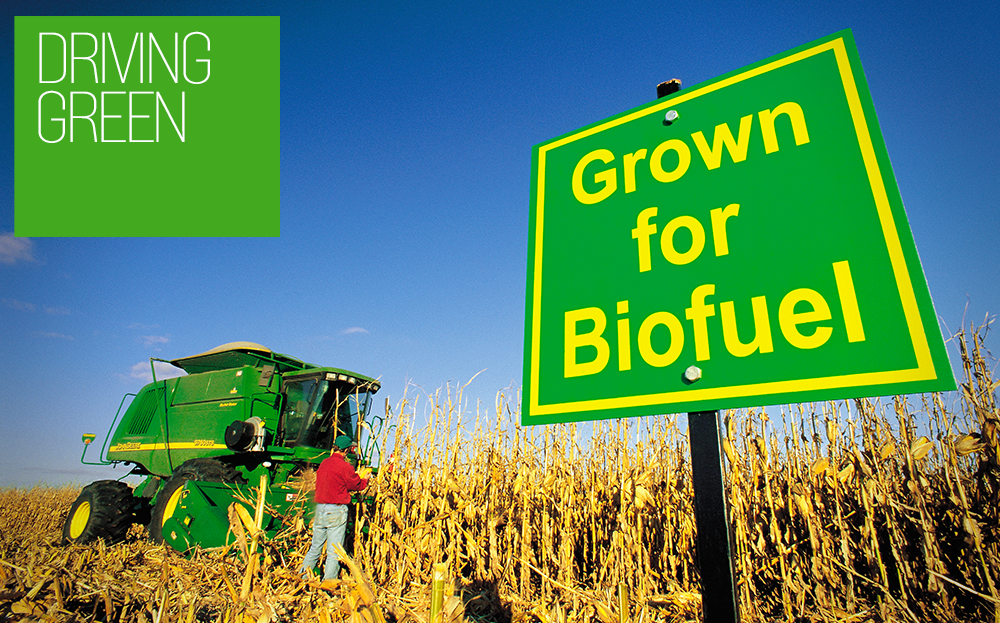Driving Green: What are biofuels?
Watered down but still packing a punch

ALL FUELS are a cocktail of chemicals. Creating the perfect fuel is always a compromise as there are so many demands to be accommodated. The fuel needs to burn cleanly, emit as few pollutants as possible, while it must be also able to be stored and transported. Crucially, it must also not leave loads of harmful deposits all over the inside of the engine, clogging things up.
Shop for a green car now
Hybrid | Plug-in Hybrid | Pure-electric
Another issue with both petrol and diesel is that they’re a finite resource, created by refining crude oil. But what if you could add something to these fuels, which is the equivalent of watering them down? The answer is that you can; both petrol and diesel can be ‘diluted’ by adding renewable substances.
Diesel can be turned into biodiesel by adding vegetable oil from plants such as oilseed rape, or sunflower, soy or palm oil. This additive comes with the catchy name of Vegetable Oil Methyl Ester (VOME) and under European regulations, no more than 5% of biodiesel can be the VOME element. According to Citroen, using biodiesel in place of regular diesel, CO2 emissions are cut by 18% and particulate emissions are slashed by 22%.
Renewable additives can also be combined with petrol, to create bioethanol. This time, the additive is ethanol, which is a type of alcohol produced by fermenting sugar (beet or cane) or starch made from cereals such as wheat or corn. Under EU law, petrol can consist of up to 10% ethanol; this fuel is known as E10. But in some countries – most notably Brazil and Sweden – E85 is offered. As the name suggests, 85% of this fuel is ethanol.
On the face of it, biofuels are good news all round, but it’s not quite that simple. Growing the necessary crops uses lots of land that may well be needed for food production, so biofuels puts pressure on land use. Also, older cars don’t have fuel systems that can cope with all of the ethanol in E10; rubber hoses and injection systems can be harmed by using high-ethanol petrol too much.
However, most fuel companies use up to 5% ethanol in their regular unleaded petrol, and that’s been the case for many years. But EU law was changed in 2013 to allow fuel companies to add up to 10% ethanol to petrol, instead of the previous 5%. As a result we can expect to see the concentration of ethanol going up – although petrol pumps have to be labelled if they’re dispensing E10.
So if you’ve got a classic car, be careful what you feed it. Many fuel companies don’t add any ethanol to their super-unleaded products, so if you’re running a classic car and you want to keep your fuel system in good condition, running on super-unleaded is probably the way forward.
For a list of cars that are officially cleared to run on E10, click here.
Driving Green contents
Introduction to green driving
- What is a “green” car?
- What does Euro 6 mean when it comes to emissions?
- Why have green cars been developed?
- Nine tips for eco-driving
Choosing a green car
- What are hybrid cars?
- What are plug-in hybrid (PHEV) cars?
- What are extended-range electric vehicles (E-REVs)?
- What are hydrogen fuel cell vehicles?
- Are pure-electric cars suitable?
- Whatever happened to LPG (liquid petroleum gas)?
- What are biofuels?
Green car buying guides
Financial, environmental and practical implications of green motoring
- Electric car UK public charging point maps
- The truth about real-world mpg and fuel costs
- How much is VED (road tax) for green cars?
- Are electric cars expensive to insure?
Click to read car REVIEWS or search NEW or USED cars for sale on driving.co.uk




